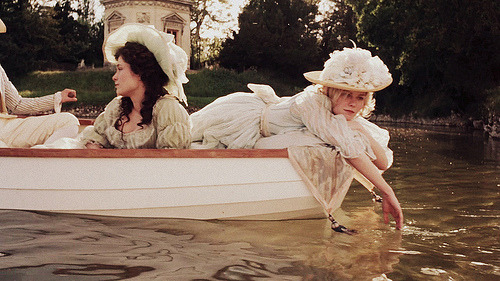The most famous hall in the World, where there is the most people during the visiting day:
the Hall Of Mirrors.
 |
| The Hall of Mirrors on a Monday, closing day at Versailles (photo by me) |
When Louis XIV, the sun-king, build the Palace, on the same place where stood decades before his father’s hunting mansion, there was no Hall of Mirrors. Instead, a very large terrace that offerred the perfect view, with the perfect perspective on the gardens was built. But in Versailles, winters can be dificult and very long, so in 1678, the king decided to built a large hall that will connect his appartments to the queen’s ones
To keep a great view on the garden’s perspective, he invited the best mirror makers from Venice to create mirrors that would match the windows, giving the impression that the room was enlarged by them.
The king asked his first painter, Charles Le Brun, to decore the ceilings, with paintings dedicated to his own military victories against the others European nations.
 |
| 'La puissance victorieuse du roi' by Charles Le Brun (photo RMN) |
This hall was sometimes used as a ballroom, for parties and receptions, but was mostly used as a passage between the king's and the queen's appartements, linking the two most important part of the Palace.
































